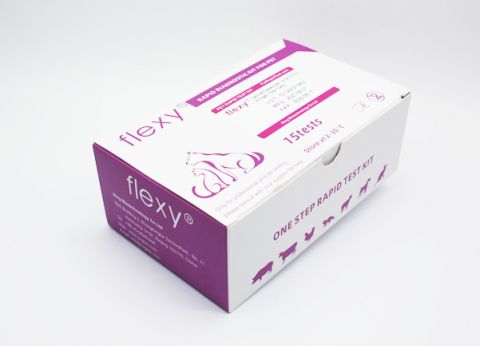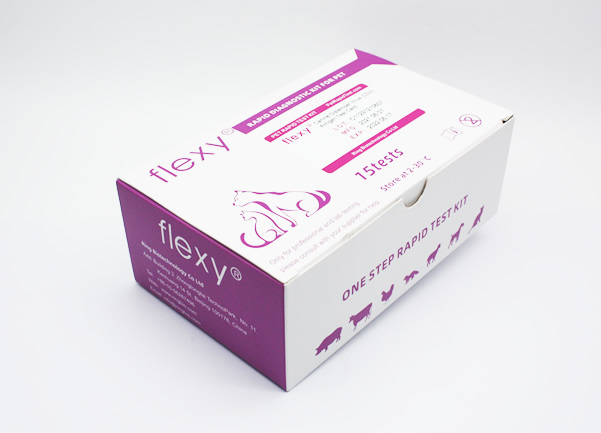
Canine Adenovirus type 2 CAV2 Antigen Test Card is a lateral flow rapid test to detect CAV2 antigen in dog nasal secretion.
Basic information
Canine adenovirus type 2 (CAV-2) is related to the hepatitis virus, canine adenovirus type 1 (CAV-1). CAV-2 is used in vaccines to provide protection against canine infectious hepatitis. CAV-2 is also one of the causes of infectious tracheobronchitis, also known as canine cough.
The canine adenoviruses (CAV) consist of two predominant serotypes, CAV type 1 and type 2 (CAV-1 and CAV-2). CAV-1 is predominately multisystemic and causes hepatocellular necrosis and vasculitis. The virus is moderately resistant in the environment but susceptible to heat (steam cleaning) and disinfection by quaternary ammonium compounds. Dogs may carry this virus subclinically despite high levels of neutralizing antibodies. The antigenically related CAV, CAV-2, is predominately associated with upper respiratory tract disease. It is shed for 8 to 9 days postinfection.
Infections by CAV-2 may result in bronchitis, bronchiolitis, and focal turbinate and tonsillar necrosis. The virus has been reported to be associated with kennel cough syndrome. The important feature of CAV-2 is its antigenic relatedness to CAV-1 and the use of this strain in vaccines, which provides protective immunity to CAV-1.
Key facts of the Canine Adenovirus type 2 CAV2 Antigen Test Card
- Ready to use kits for pet owners and vet clinic
- No special instrument required
- Suitable for field test
- Result in 10min.
Canine Adenovirus type 2 CAV2 Antigen Test Card kit Components
| Item # | Item | Qty |
|---|---|---|
| 1 | CAV2 Ag Rapid Test Card | 20 pcs |
| 2 | Sample buffer tube | 20 bottles |
| 3 | Plastic pipettes, 0.5ml | 20 pcs |
| 4 | Kit instruction, | 1 set |
Signalment
Dogs of any age, breed or sex will be equally affected by this virus if not vaccinated.
Clinical Signs
Animals present with pyrexia, mild depression, nasal/ocular discharges and a dry, harsh, persistent cough. Corneal opacity is sometimes seen.
Diagnosis
Virus can be isolated from respiratory secretions early in the disease.
Pathology
There is usually evidence of mild bronchointerstitial pneumonia, necrosis of bronchiolar and alveolar epithelium, oedema and type II pneumocyte hyperplasia.
Control
It is important to isolate coughing dogs and disinfect premises, in any cases of coughing as all respiratory disease is contagious.
CAV-2 is largely controlled in the UK along with CAV-1 (infectious canine hepatitis virus) through the use of vaccination against CAV-1. As the viruses cross-protect, immunity is achieved from vaccinating against CAV-1.
Extended reading
- erk veterinary manual, Overview of Infectious Canine Hepatitis
- Canine Adenovirus type 2, WikiVet



